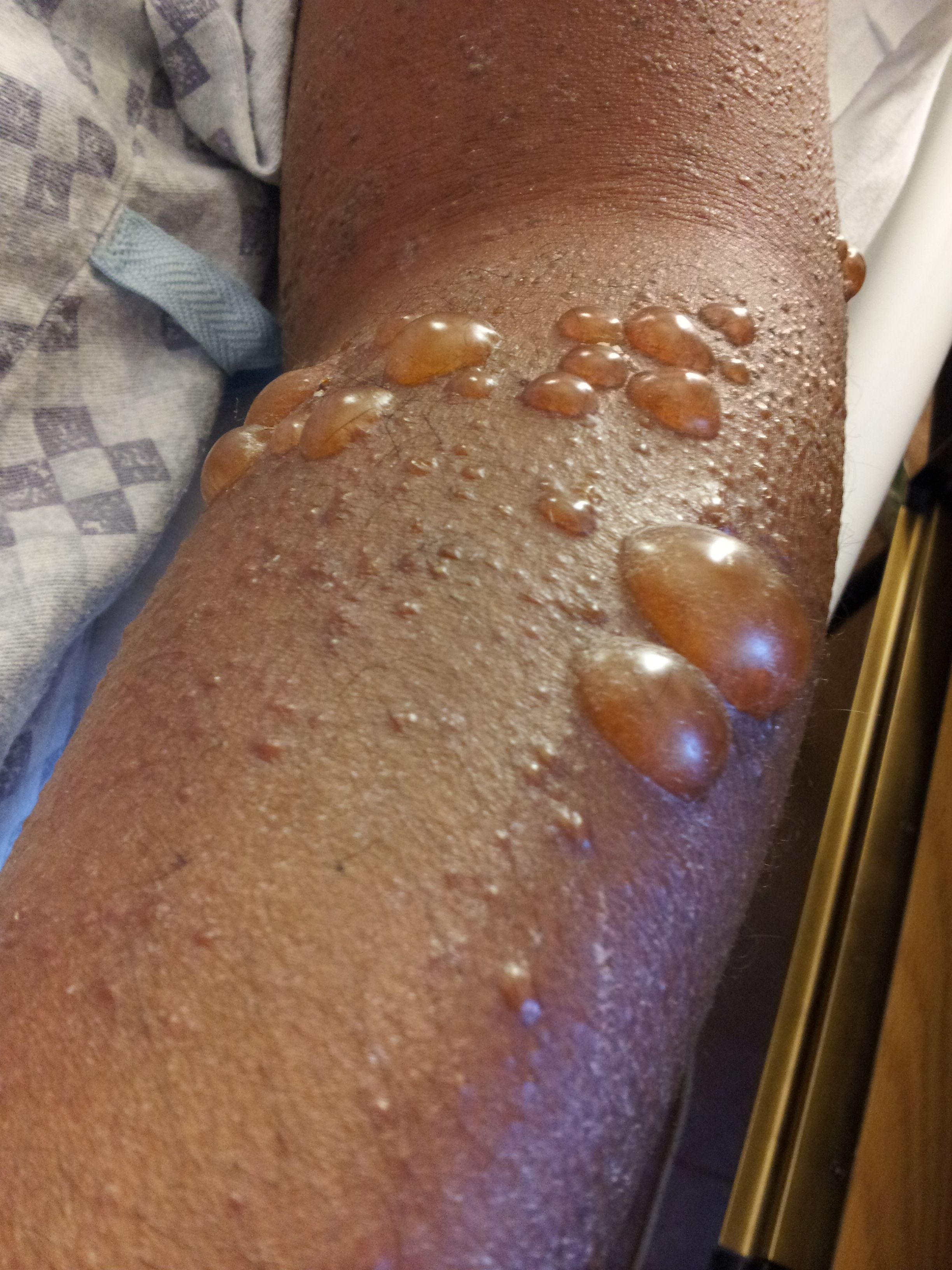- Acne
- Actinic Keratosis
- Aesthetics
- Alopecia
- Atopic Dermatitis
- Buy-and-Bill
- COVID-19
- Case-Based Roundtable
- Chronic Hand Eczema
- Chronic Spontaneous Urticaria
- Drug Watch
- Eczema
- General Dermatology
- Hidradenitis Suppurativa
- Melasma
- NP and PA
- Pediatric Dermatology
- Pigmentary Disorders
- Practice Management
- Precision Medicine and Biologics
- Prurigo Nodularis
- Psoriasis
- Psoriatic Arthritis
- Rare Disease
- Rosacea
- Skin Cancer
- Vitiligo
- Wound Care
Article
Parkinson’s Disease Linked to Increased Risk of Bullous Pemphigoid
Author(s):
Researchers have linked the neurodegenerative disorder to several autoimmune diseases, including the rare skin condition bullous pemphigoid.
Patients with Parkinson’s disease (PD) may be at an increased risk of simultaneously developing several autoimmune diseases such as bullous pemphigoid (BP), a recent systematic review and meta-data analysis finds.1
Photo: Creative Endeavors/AdobeStock

BP, despite being among one of the most common skin-blistering disorders, has a prevalence of 0.2 to 3 incidents per 100,000 patients. Patients are typically elderly individuals. The condition manifests itself as inflammatory legions which, over time, become blistered and fill with clear fluid. In some instances, the condition can be fatal.2
“A meta-analysis summarizing the association of BP with neurological disorders included eight studies on PD with BP, and the results suggested that patients with BP were more than three times more likely to have PD,” the review said.
The results also suggested a nearly 2.67-fold risk of patients having BP and PD combined.
The systematic review, first published in Fronters in Immunology in late January, confirms the results of previous epidemiological studies3 suggesting a similar linkage. Researchers set out to confirm the association between conditions as not all prior analyses have produced concurring results, according to the review.
Researchers reviewed four medical databases: Embase, MEDLINE, PubMed and Web of Science Core Collection, and collected data from 46 studies spanning numerous patients (n=873,643), controls (n=13,402,821) and countries of initial study origin.
Studies used in the analysis were selected based on relevance and pooled from the time period of each databases’ respective creation to Dec. 12, 2022. Each study was evaluated for quality utilizing the Newcastle-Ottawa Scale (NOS).
A total of 34 autoimmune disorders were included in both the search and analysis processes. Nearly 40% of the included studies were related to the associations between PD and bullous pemphigoid.
The review also found that patients with PD are susceptible to conditions such as Crohn’s disease, Graves’ disease, inflammatory bowel disease (IBD), ulcerative colitis and Sjögren’s syndrome.
Following the systematic review, researchers then conducted a meta-analysis of 38 studies for factors such as heterogeneity, outcomes and risk estimates.
Overall limitations to the study, however, include result heterogeneity and the types of studies included in analysis, which were predominantly retrospective in nature.
References
- Li M, Wan J, Xu Z, Tang B. The association between Parkinson’s disease and autoimmune diseases: A systematic review and meta-analysis. Frontiers in Immunology. 2023;14. doi:10.3389/fimmu.2023.1103053
- Parellada J, Olivera Arencibia Y, Watson H, Parellada N, Saikaly LE, Saikaly SK. A case of bullous pemphigoid: A prevalent and potentially fatal condition. Cureus. 2018. doi:10.7759/cureus.2533
- Ravn Jørgensen A-H, Thyssen JP, Egeberg A. Skin disorders in Parkinson’s disease: Potential biomarkers and risk factors. Clinical, Cosmetic and Investigational Dermatology. 2017;Volume 10:87-92. doi:10.2147/ccid.s130319
Newsletter
Like what you’re reading? Subscribe to Dermatology Times for weekly updates on therapies, innovations, and real-world practice tips.







